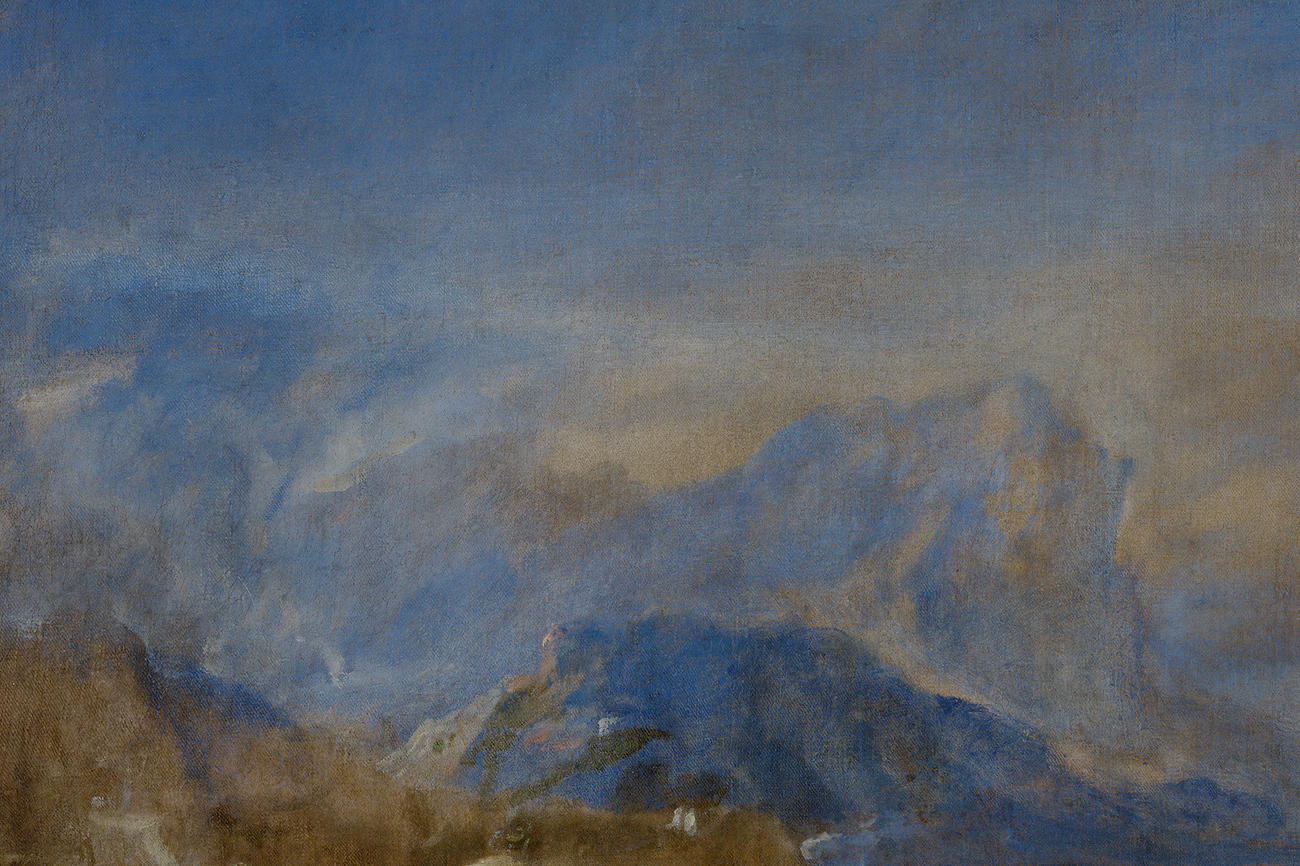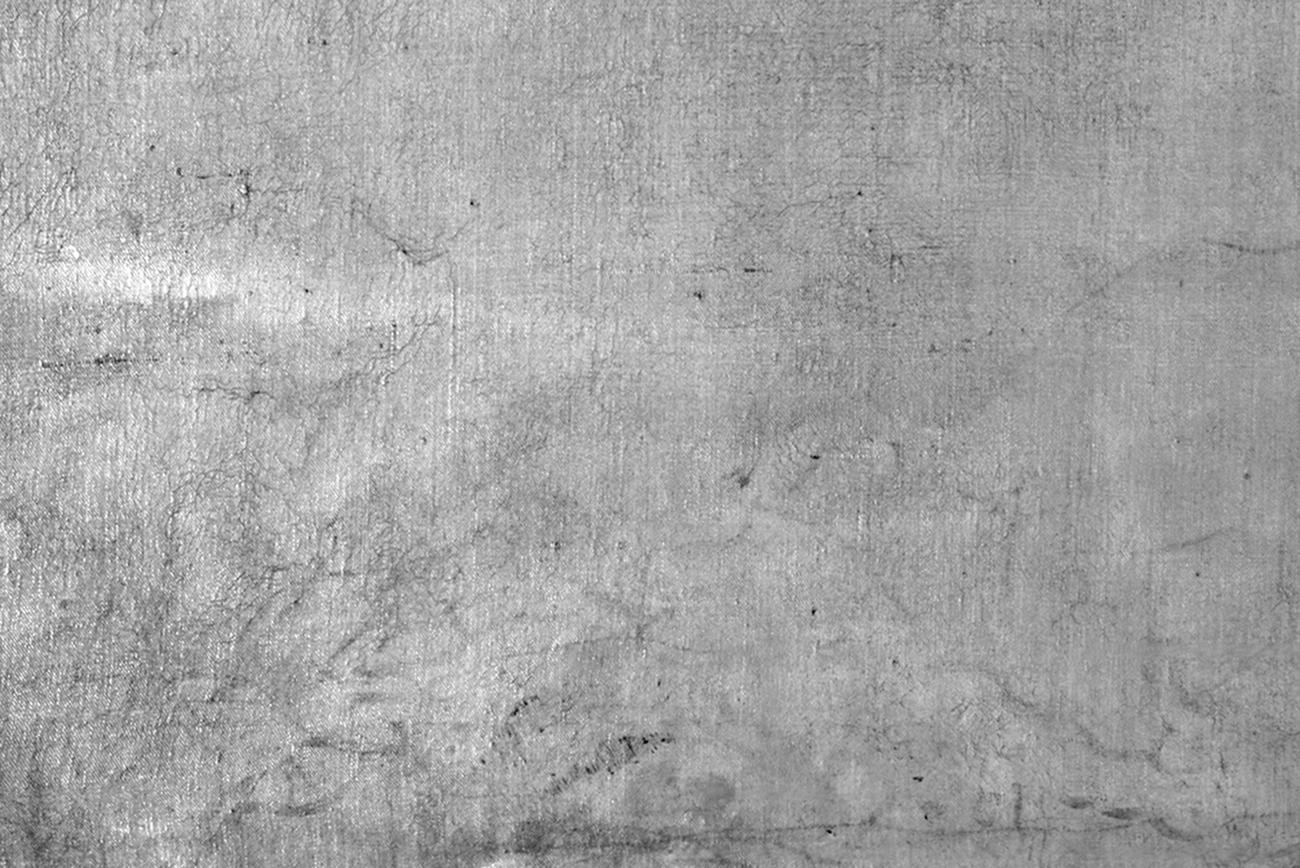Titian’s late works profoundly influenced the trajectory of Western art. His highly innovative painting techniques inspired many great painters such as Peter Paul Rubens and Diego Velázquez. Many of the breathtaking pictorial effects seen in the Rape of Europa give the impression of a complex buildup of oil paint—however, the paint layers are economically applied and surprisingly thin. Titian’s paint surface is characterized by loose, colorful brushwork and the dragging and smudging of the paint over the canvas to create vibrant, nuanced effects that animate the emotionally charged scene.
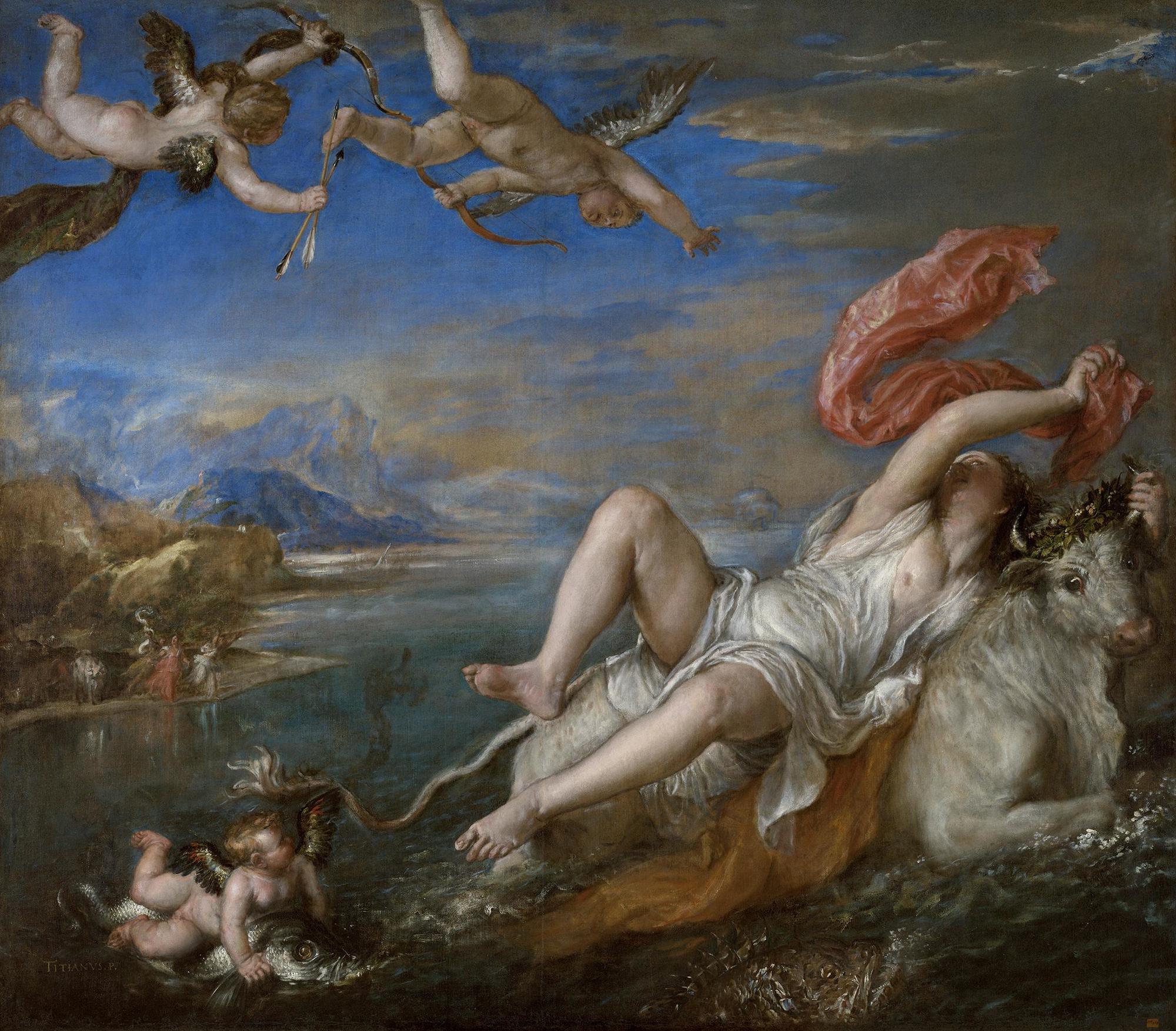
Titian (Italian, about 1488–1576), The Rape of Europa, 1559–1562. Oil on canvas
Isabella Stewart Gardner Museum, Boston. See it in the special exhibition “Titian: Women, Myth & Power,” August 12, 2021 - January 2, 2022 or in the Titian Room.
After applying a thin gesso ground to the canvas, Titian sketched the composition with black lines using a brush. An infrared camera capable of penetrating into the paint layers reveals the dark underdrawing lines, which are loosely applied to delineate the position of the various forms and shapes. For the most part, the finished painting closely follows the initial sketch lines and only minor adjustments to the composition are discernible.
The most notable underdrawing lines can be seen in the figure of Europa, especially in the contours of her drapery and the upper edge of her raised leg where slight shifts in the composition are visible. Across her torso, the dark, fluid lines are suggestive of the multiple folds of the fabric that cling to her flesh.
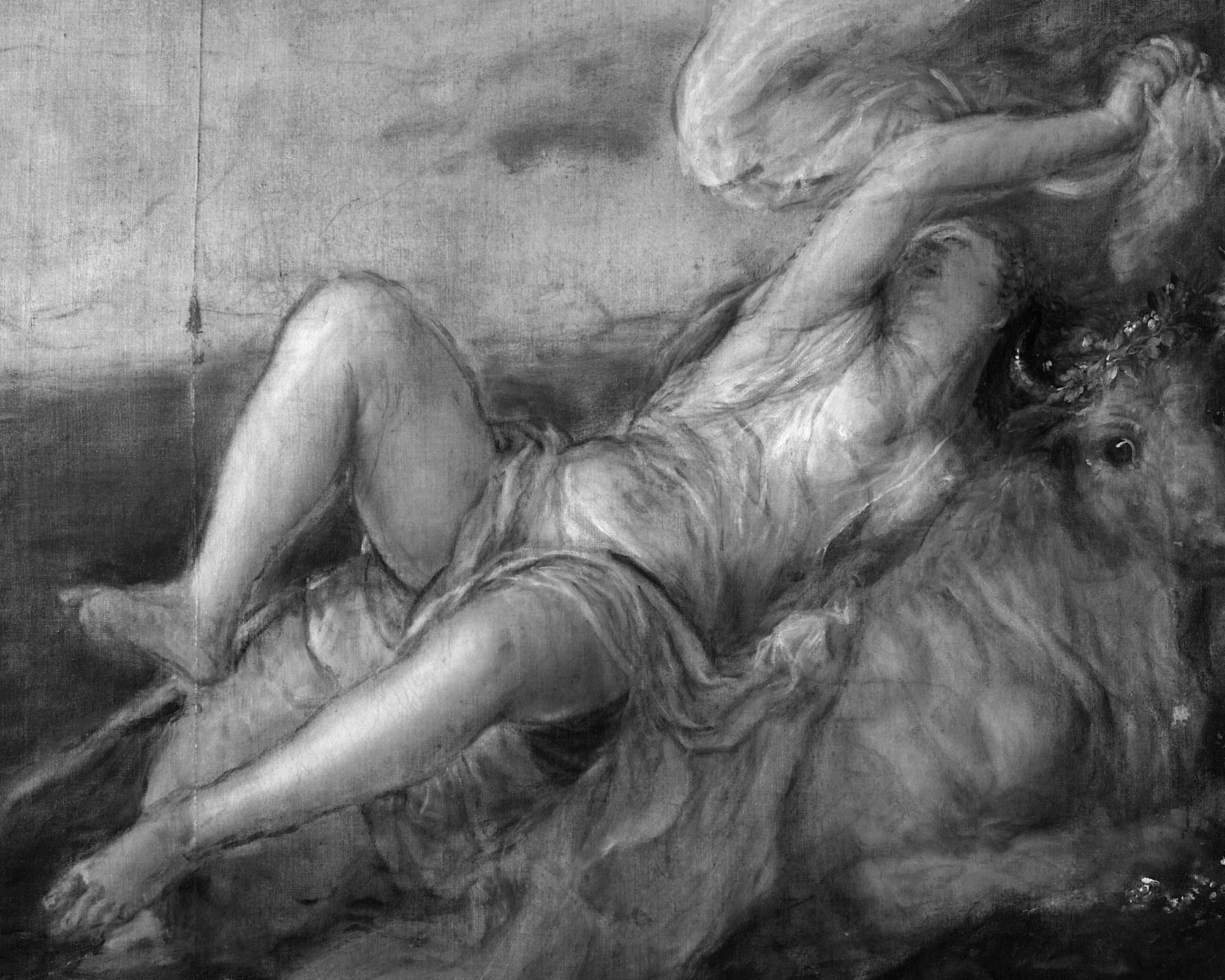
Infrared detail of Titian’s Rape of Europa showing underdrawing lines throughout the figure of Europa
Photo: Rachel Billinge, The National Gallery, London
In one of the most expressive passages in this painting, Europa’s right hand grasps the red silk drapery. Titian painted her wrist and fingers in a variety of tones, ranging from cool pink to fiercely red touches along the knuckles. In the drapery, a more saturated hue of the same color accentuates the highlights, calling attention to the force of Europa’s grasp. Dark brown outlines surround each finger and articulate the joints. The lines contrast with her luminous skin and endow the hand with a sense of relief. Titian exploited the herringbone weave of the canvas through a sparing application of paint, enhancing the texture of his composition and contributing a dynamism that paved the way for modernism.
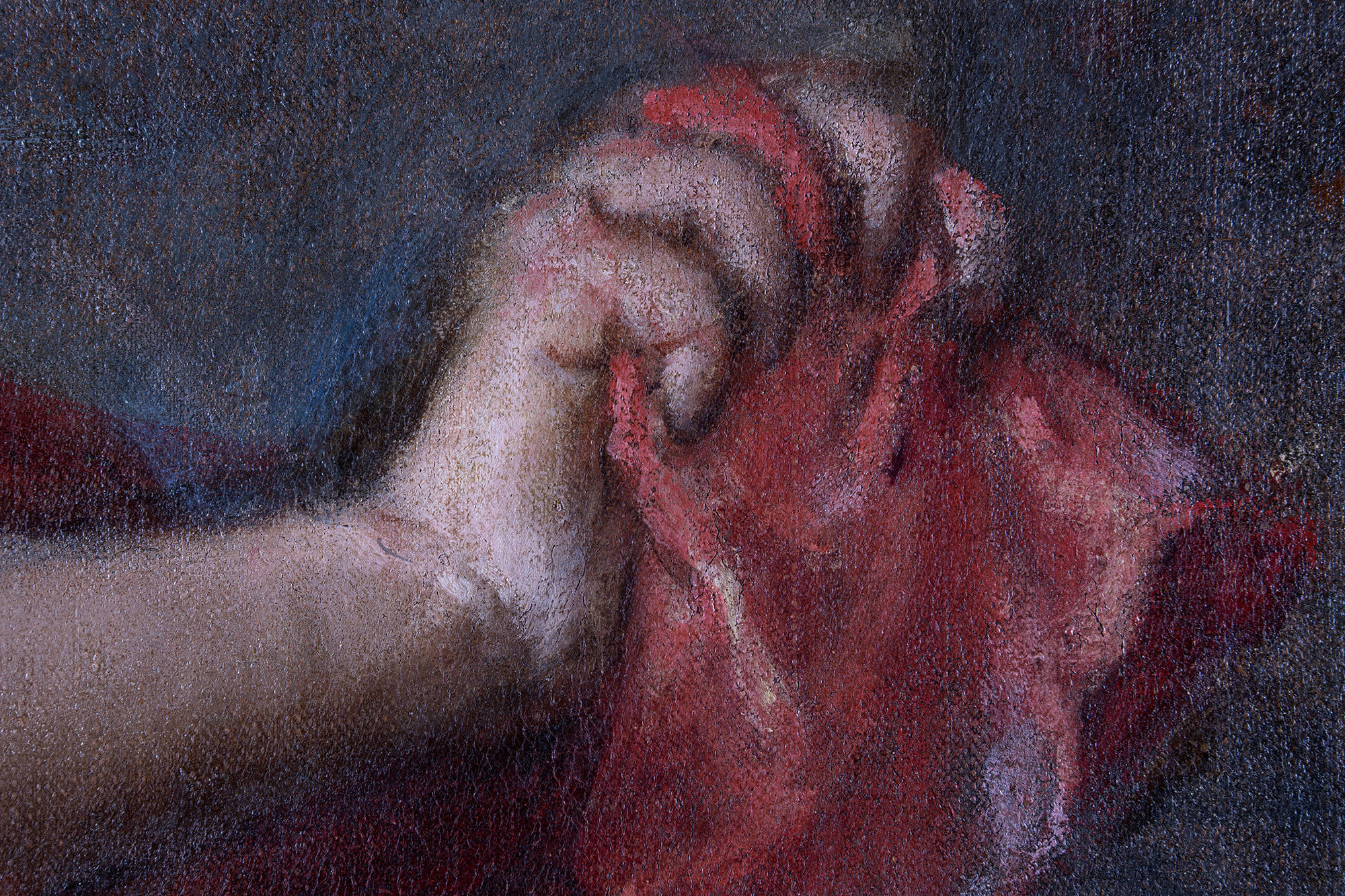
Detail of Titian’s Rape of Europa showing Europa’s hand
Titian’s expert handling of paint animates the voluptuous form of Europa’s extended leg. With the lightest touch, he applied loose scumbles (thin, opaque paint layers that give a dull or sketchy effect) of pink to the knee and upper edge of the thigh. Underneath it, Titian left a reserve of barely covered ground layer, transforming this void into a halo of reflected light. Together, they enhance the appearance of a plausibly three-dimensional surface.
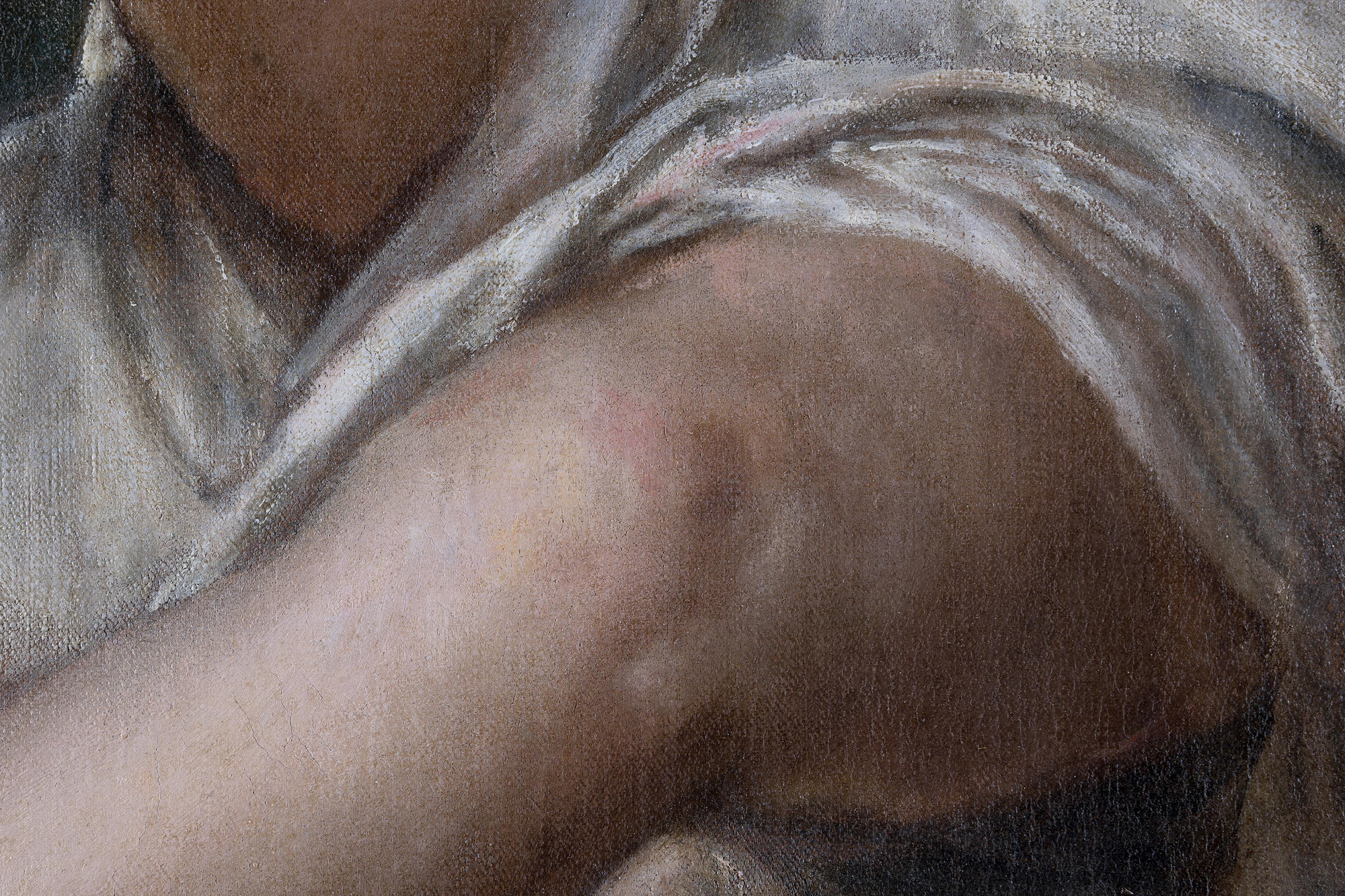
Detail of Titian’s Rape of Europa showing Europa’s left leg
The upper left passage is all about finish. Take a closer look and contrast the sketchy contours of the cherub’s right hand with the meticulously described arrows. Titian painted each component with obsessive attention to detail, from glistening head—constructed of black paint and two simple white highlights—to forked nock. On the left, he rendered the ruffled fletches in light and shadow, applying extreme values of black and white to command the viewer’s attention.
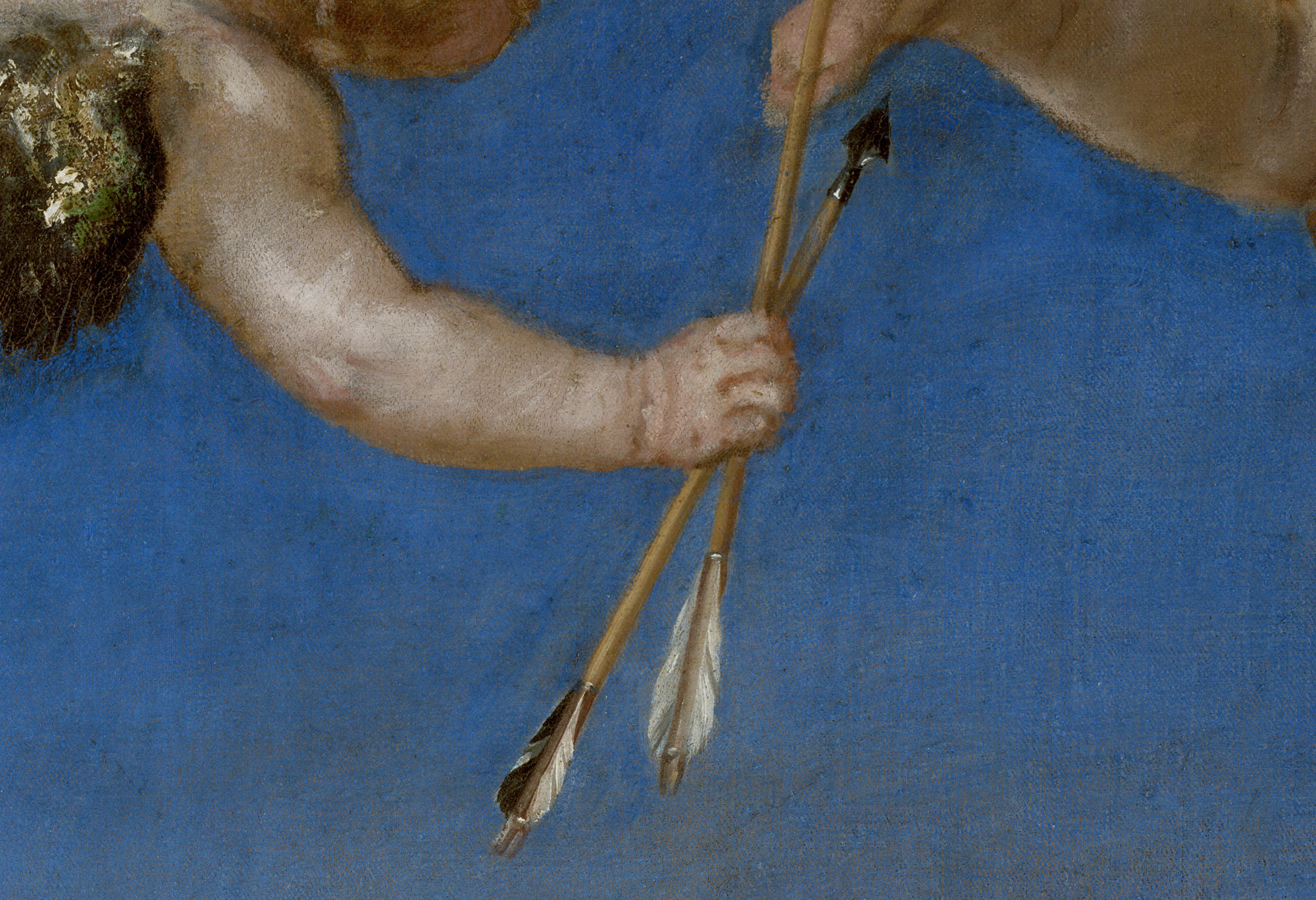
Detail of Titian’s Rape of Europa showing the cherubs’ arrows
In the background, deep blue hills culminate in a jagged peak. Titian painted the hills as if seeing them through a mist-filled haze, predating by centuries the luminous, atmospheric seascapes of Joseph Mallord William Turner. Deliberately unpainted passages allow the canvas to peek through, creating warm, yellowish highlights along the horizon. This vaporous backdrop contrasts with the roiling sea—and the terrifying story playing out in the foreground.
Detail of Titian’s Rape of Europa showing the landscape and the underdrawing
The red silk held in Europa’s grasp encapsulates all of Titian’s dazzlingly painterly effects in a single passage. Expressive brushstrokes convey both the movement of the red silk and the reflective play of light across its surfaces. Titian chooses vermillion as the foundational color of the drapery. His wet-in-wet application of paint delivers a rich mid-tone and invests the silk with a windblown fluidity. On top, red glazes of transparent lake enhance the impression of depth and form. Titian picks out the folds in exuberant dashes of lead tin yellow and lead white. White paint over a darker red underlayer delivers cool highlights of an almost violet hue.
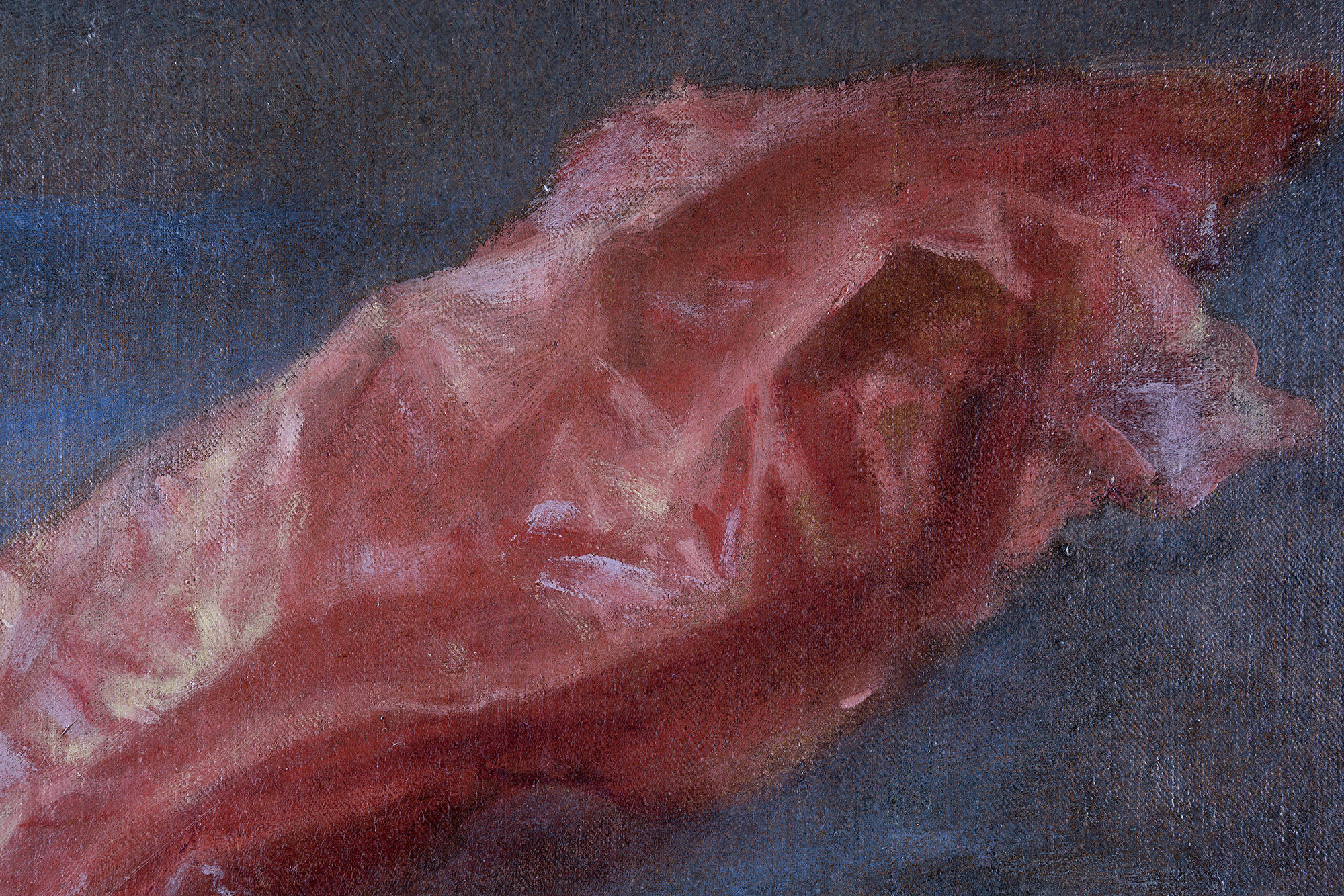
Detail of Titian’s Rape of Europa showing red silk fabric
Learn more about the conservation of Titian’s Rape of Europa in the special exhibition Titian: Women, Myth & Power on view through January 2, 2022.
You May Also Like

Attend the Stout Lecture, September 16, 2021
Titian’s Rape of Europa: Restoration and the Painter’s Technique

Buy the book
Titian’s Rape of Europa

Explore the exhibition
Titian: Women, Myth & Power
